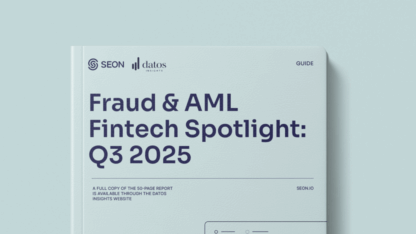As the compliance landscape evolves at a breakneck speed, maintaining balance amid regulatory shifts, technological advancements and increasingly sophisticated criminal tactics has never been more important. The Association of Certified Anti-Money Laundering Specialists (ACAMS)’s 2024 conference, The Assembly Las Vegas, provided a much-needed forum for financial crime professionals to discuss today’s challenges and opportunities, sharing insights into the future of anti-financial crime (AFC) and anti-money laundering (AML) strategies.
The in-person discussions showed the future’s roadmap, from harnessing the potential of generative AI (GenAI) to addressing inefficiencies in case management and transaction monitoring. Key themes that emerged included:
GenAI in Financial Crime Prevention
One of the most talked-about topics this year was GenAI, particularly its application in AFC. While there is apparent excitement surrounding its potential, there is also caution. Industry experts like Meera Das, VP of AML and Compliance Technology at Capital One, pointed out widespread adoption will take time. With this in mind, the prevailing message is to engage with and explore the potential of establishing or enhancing a dedicated Center of Excellence for GenAI strategic planning within every organization. It will be crucial that AFC leadership is integrally involved, ensuring they have a meaningful presence at the decision-making table.
Other conversations centered on the need for rigorous quality assurance, centralized governance and the challenges inherent in explaining complex AI models to regulators. Additionally, discussions occurred around data privacy – specifically instances where personally identifiable information (PII) might be captured by large language models (LLMs). Compliance professionals further emphasized the importance of attracting and retaining staff with AI and regulatory expertise to navigate these issues. They encouraged staff training on the topics, highlighting how to promote and receive the best out of capabilities.
Case Management Improvements
Another recurring pain point discussed throughout the conference was inefficiencies in handling large volumes of alerts and cases. Financial institutions continue to struggle with aging alerts, manual processes and a pervasive lack of transparency across fraud and AML workflows, resulting in increasing pressure not to miss deadlines for regulatory reporting. With regulatory reporting hampered by siloed data and disconnected workflows, institutions are calling for better tools to track and collaborate on cases, as well as real-time metrics on alert aging.
Transaction Monitoring Enhancements
With the rise of real-time payments and faster money movement, financial institutions grapple with complex transaction monitoring challenges, especially across international borders. Conference conversations highlighted the need for enhanced entity-level analysis to track high-risk behaviors more effectively. In the US, faster payments are still relatively new for compliance teams, presenting ongoing challenges for monitoring and screening payments in real time, especially across counterparties and sanction lists.
Sanction Screening Innovations
Sanction screening continues to be difficult, especially when identifying indirect relationships between sanctioned individuals and their financial networks. The complexity of ownership structures, combined with the dynamic nature of sanction lists, is yielding gaps in detection.
The conference highlighted opportunities to use advanced analytics – including entity resolution and graph-based tools – to uncover hidden connections within corporate hierarchies. There was also a focus on improving name-matching algorithms to reduce false positives while maintaining accuracy.
Evolving KYC and Perpetual Monitoring
Traditional KYC processes were critiqued for needing to be faster and more consistent, with institutions moving toward perpetual KYC models. Rather than conducting checks only at onboarding or at periodic intervals, perpetual KYC ensures that customer profiles are continuously updated based on real-time data and evolving risk indicators.
As enhanced due diligence (EDD) becomes more complex as regulators scrutinize beneficial ownership structures, conference discussions emphasized the importance of keeping up with global regulatory changes and incorporating tools that allow institutions to track complex corporate hierarchies easily.
Automating Regulatory Filings
As regulatory filings grow, institutions seek ways to streamline the process. Conference-goers emphasized AI’s role in automating data gathering and improving the timeliness of creating narratives for humans to validate and enhance to ensure the quality of reporting meets regulatory compliance standards. With regulators pushing for reporting filings to more detailed and actionable with consistent information, automating some of these tasks will reduce the burden on compliance teams and improve the accuracy and quality of the reports being filed.
Collaboration and Innovation Ahead
The insights gathered at The Assembly paint a clear picture: institutions must continue enhancing their technological capabilities while maintaining regulatory compliance. The path forward will involve leveraging AI for automation, improving real-time transaction monitoring and adopting perpetual KYC models for specific use cases. As regulatory frameworks tighten and financial crime becomes increasingly sophisticated, collaboration and innovation will ensure compliance teams are equipped to meet the future’s challenges.
Our guide, “Aligning Forces: The Interplay of Fraud & Money Laundering in AFC Compliance,” provides essential insights and strategies to combat these challenges. Continue reading here>








